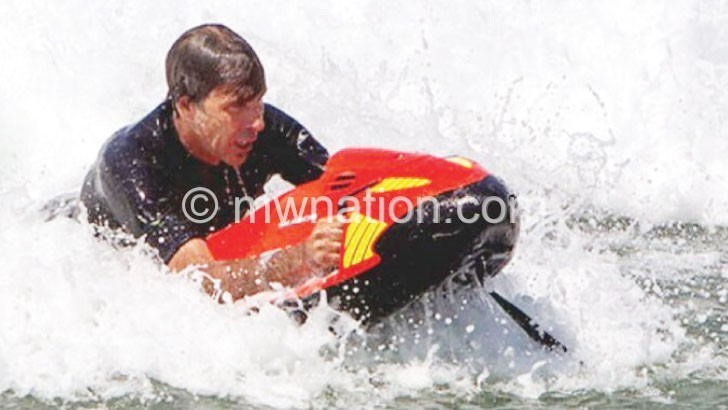Can technology make the water safe?
There are many ways of killing a rat. This is the direction that experts and activists in drowning prevention have taken.
A display of some of the technologies that have been deployed to combat the silent crisis, which according to the World Health Organisation (WHO) claims up to 372 000 people annually, on the sidelines of the World Conference on Drowning Prevention (WCDP) in South Africa gave delegates a chance to appreciate the efforts being made on the technological front.
Personal floating devices

Research shows that personal floating devices, commonly known as lifejackets, reduce risk of drowning.
The United States Coast Guard estimates that 80 percent of drowning fatalities could have been saved if they were wearing lifejackets at the time of the marine accident.
“The United States Coast Guard’s (USCG) annual report of Recreational Boating Statistics revealed a total of 658 deaths and 2 629 injuries as a result of recreational boating accidents in 2017. Where the cause of death was known, 76 percent of fatal accident victims drowned with 84.5 percent of the drowning victims reported as not wearing a life jacket,” reads the report in part.
During the WCDP, it was noted that there are misconceptions that those who wear lifejackets are deemed as being afraid of the water.
“Men don’t wear lifejackets because their fear they will look like they are scared,” says Lifesaving Canada public education director Barbara Byers.
Another concern was that the life jackets designs did not have appealing looks for those people who visit water bodies for recreational purposes.
The meeting learnt of a number of initiatives aimed at making lifejackets more appealing including making life jackets according to gender. The meeting also learnt that there are efforts to produce lifejackets in different colours to suit the tastes of various ages and gender.
Whatever the preferences, experts argue that all people travelling on water need lifejackets.
“A third of drowning is boating related. Even those who know how to swim need lifejackets,” says Elizabeth Benet from Seattle Children’s Hospital.
Seabob Rescue
The Seabob Rescue is an electric 7.5 horsepower water scooter that can pull up to 10 people out water.
During a demonstration in Durban, lifeguards told WCDP participants that the Seabob Rescure, which operates on a minimum water depth of one metre and can dive up to 40 metres deep, can pull up to 10 people from water.
Alternative personal floating devices
In response to those who do not enjoy going swimming while donning life jackets, German firm Restube GmbH has developed devices to enhance water safety.
The device if triggered by pulling a cord which inflates a floating device.
“It is very easy to use. The yellow colour also enhances visibility. It also comes with a whistle to help the user call for attention,” says Steffen Rose from the Restube International Sales and Business Development Department.
Rose says they have also developed another Restube version for lifeguards which is fitted with a cord that can be used to pull a paper facing the risk of drowning out of the water.
Drone rescue
Restube GmbH has also developed drones that can drop Restube devices to people in danger.
“Our water rescue drone can drop a Restube. Thanks to Restube automatic, which automatically triggers on contact with water, the situation could be diffused immediately,” says Clemens Menge a lifeguard.
Which is the best?
“Drowning is a global problem, particularly in low and medium income countries. It is preventable everywhere. Context specific interventions are available. Multisectoral approach is needed for scaling up,” observes Dr. Aminur Rahman from the International Drowning Research Centre.
Whichever method works, drowning needs to be addressed.





